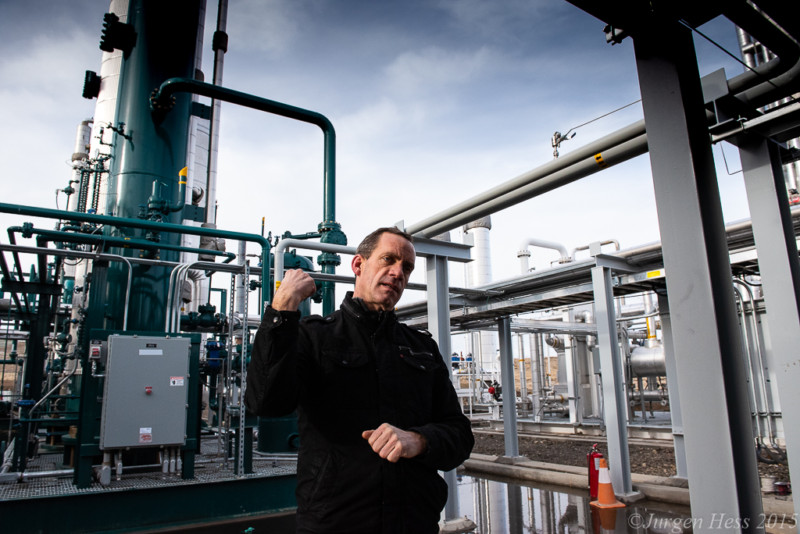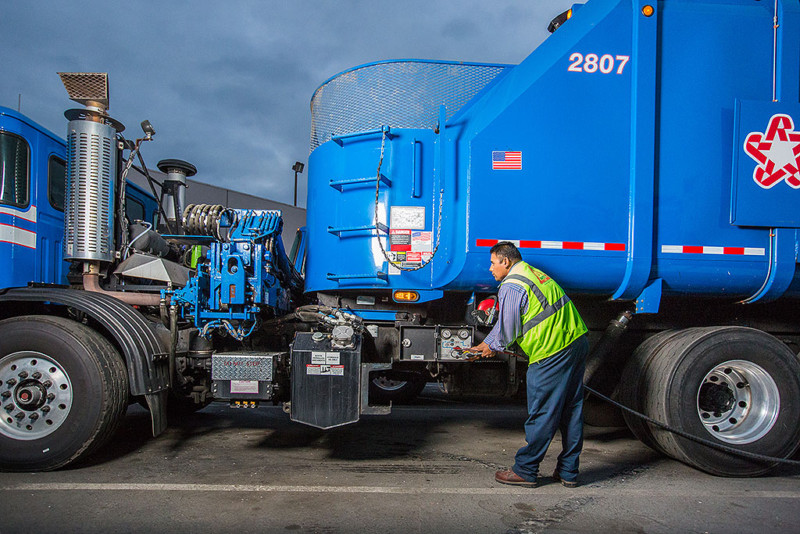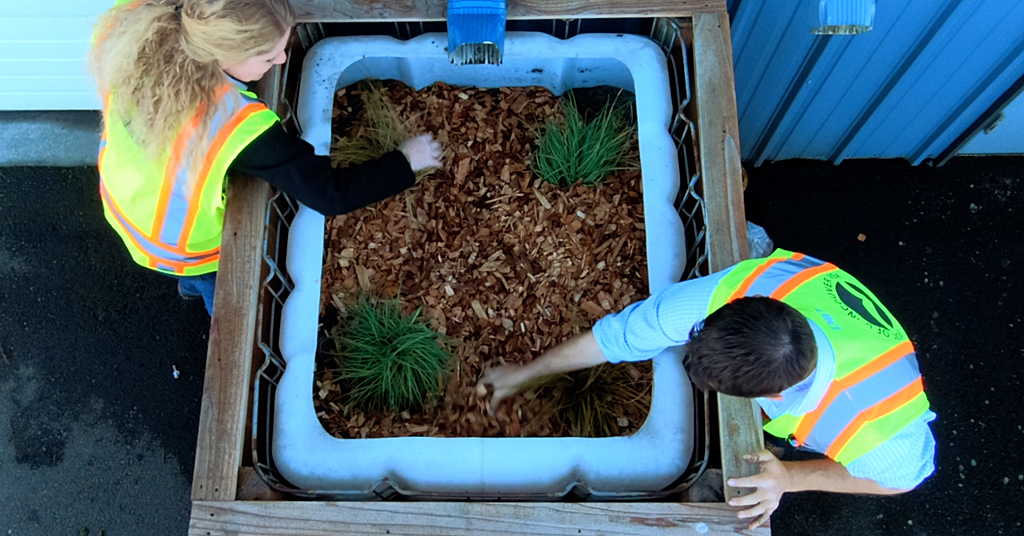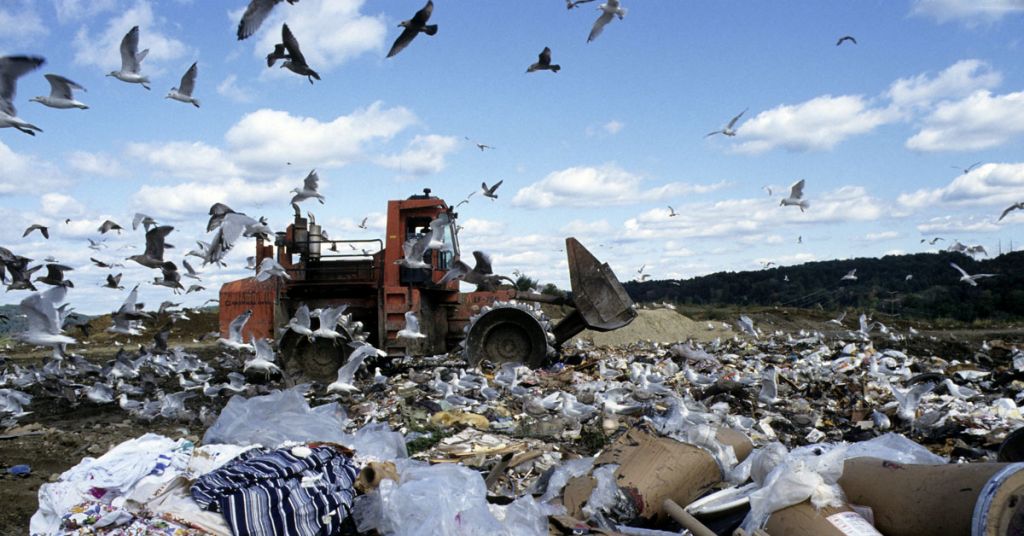By Dac Collins. Jan. 24, 2019. As a species, we create an exorbitant amount of garbage. To call our love of packaging “excessive” would be understating the problem. Obsessive might be a better word for it, since nearly everything we consume is either boxed, bottled or wrapped in plastic.
The figures are staggering, really.
Consider that every American generates, on average, 4.4 pounds of trash daily. This means that your typical American male throws away his weight in garbage every 45 days or so. And if those numbers aren’t enough to make you dizzy, just multiply 4.4 pounds per day by our population of 325.7 million (as of 2017). That’s almost 1.5 trillion pounds of trash entering our nation’s landfills. Every. Day.
In John Steinbeck’s Travels with Charley, published in 1962, the author is driving through the bustling cities of New England where he observes:
“American cities are like badger holes, ringed with trash—all of them—surrounded by piles of wrecked and rusting automobiles, and almost smothered with rubbish. The mountains of things we throw away are much greater than the things we use.”
And this passage was written years before the ubiquitous plastic water bottle, that icon of wastefulness, was invented.
But there is hope. For although we generate a tremendous amount of rubbish, Steinbeck would be impressed if he could see some of the ingenious ways we’ve found to use it.
The Renewable Gas Project
The H.W. Hill Renewable Gas Project is located in Roosevelt, Washington on the fourth largest landfill in the nation. Permitted to accept 120 million tons of garbage over its 40-year lifespan, the Roosevelt Regional Landfill is owned and operated by Republic Services, and it represents one of the biggest piles of garbage that most people have never heard of.

Solid waste arrives at the regional landfill by truck after being offloaded from the nearest railroad. Photo courtesy of Klickitat PUD.
That’s partly because 99 percent of the trash arrives by train from far away: namely the heavily populated I-5 corridor on the opposite side of the Cascades. Diapers from Everett and bar napkins from Bellingham, Mount Vernon’s food scraps and Vancouver’s toothpaste tubes—these are just a few of the things that end up here. Not that you’d go looking…but if you did, you would also find incinerator ash from Spokane, fast food wrappers from Idaho, plastic bags from Southeast Alaska and dirty socks from British Columbia. Even chewing gum from Guam finds its way here somehow or another.
In this, the Roosevelt site is no different than the thousands of other landfills currently in operation around the country. Every year, they take in tons and tons of garbage and bury it underground in lined pits, where it rots and eventually atrophies. It is up to the landfill operator to essentially sit on this garbage while this process occurs.
The operator’s main concern then becomes the methane that is naturally released during the rotting process and is 25 times more potent than carbon dioxide as a heat-trapping (or “greenhouse”) gas. The lined pits trap this gas as it builds, but it has to escape eventually. So to limit the harmful effects of methane on our environment, most operators have traditionally used an open candle flare to simply burn the gas, thereby converting it to carbon dioxide before it is released into the atmosphere.
Republic Services uses a different strategy at the Roosevelt site. Working with Klickitat County Public Utility District, they have found an innovative and practical use for the methane. By harvesting the trapped gas using a system of underground blowers and vacuums, then piping it to a state-of-the-art facility where it is cleaned and converted to compressed natural gas (CNG), the Public Utility District has found a way to turn the waste associated with garbage into a viable fuel source.
What is Renewable Natural Gas?
Before going any further, it is important to distinguish the renewable natural gas (RNG) created at the H.W. Hill facility from the other, fossilized form of natural gas on the market today. Although they are both made up primarily of methane, conventional (fossilized) natural gas is extracted from wells deep within the earth, and this is frequently done using a method known as hydraulic fracturing or “fracking” that studies have linked to contaminated groundwater (not to mention earthquakes). Renewable natural gas, by contrast, is not a fossil fuel.
Kevin Ricks* is the Renewable Energy Assets Manager for Klickitat Public Utility District. He has spent the last five years researching, designing and implementing the H.W. Hill project with help from his team at the PUD.
“The idea is that you’re not digging up something from the deep earth and adding it to the environment,” he says. “You’re using organic material that’s already in a CO2 life cycle, and you’re harnessing energy that would otherwise be wasted.”
Harnessing this energy is really a matter of cleaning it. Ricks explains that the gas coming from the landfill is only about 53% methane. The remaining 47% is made up of carbon dioxide, water, nitrogen, oxygen, sulfur and other volatile organic compounds (VOCs).
After the carbon dioxide, water, oxygen and sulfur are taken out, and the VOCs are destroyed in a thermal oxidizer, “the nitrogen is the last of the impurities to be removed,” Ricks explains. This is done using a Cryogenic Nitrogen Removal System, which is “a first of it’s kind on a landfill,” he says, “and is advantageous over other types of nitrogen separation because it requires less horsepower and therefore has a lower carbon intensity to produce.”

Ricks points at the CO2 removal system. Other impurities such as O2 and VOCs are also destroyed in the system prior to release to the environment. Photo by Jurgen Hess.
The gas that comes out as a result of this cleaning process is 98% pure methane. Classified as a highly sustainable, D3 fuel by the Environmental Protection Agency in 2014, this renewable natural gas is then injected straight into the Williams Northwest Interstate Pipeline to be used as transportation fuel.
Envisioning a future where garbage trucks run on garbage
It might sound too good to be true, but by converting the methane released from garbage to compressed natural gas, the H.W. Hill Renewable Gas Project in Klickitat County represents an important step in that direction. The facility sold its first batch of CNG on Nov. 2 of 2018.
“The facility is designed to produce 5,701 MMBTUs per day,” Ricks says. To put that in perspective, a gallon of diesel fuel has an energy content of around 139,000 BTUs. So the 5,062 MMBTUs that were produced at the H.W. Hill facility on Jan. 2, for example, are equivalent to roughly 36,482 gallons of diesel.
Because the Klickitat PUD has a 15-year contract with an Obligated Party (a petroleum producer or importer—BP for example—who is required by law under the Federal Renewable Fuel Standard to produce or purchase certain volumes of renewable fuels based on their sales), Ricks says that most of the gas will likely be sold to California.

Off to California. Daniel Waineo, a Senior Project Manager with Montrose Environmental, helped engineer the landfill gas project. Photo by Jurgen Hess.
“It would have been really nice to keep the fuel in state,” he explains. “But California is a little further down the road with their renewable fuel standards and infrastructure. So, for right now, that’s where the fuel ends up going.”
The contract dictates that approximately two-thirds of the renewable natural gas produced is sold directly to BP at a fixed rate. The remaining third goes into the market, where it is sold to companies such as Clean Energy Fuels, a company based in southern California that operates a network of over 550 natural gas filling stations across North America. The company offers both CNG and LNG (liquid natural gas) in 43 states and throughout Canada, and they work hand-in-hand with transportation companies and large fleets to help them make the transition from diesel.
For many of these companies, making the switch is a no-brainer.
Vice President of Clean Energy Chad Lindholm explains that a diesel gallon equivalent (DGE) of natural gas is generally a dollar cheaper than a gallon of diesel fuel. And the environmental benefits of switching to natural gas are even more compelling.
In the case of heavy duty diesel engines, Lindholm says, “the natural gas engine is certified as the cleanest engine commercially available today.”
“When you factor in both the criteria pollutants and the emissions reductions associated with greenhouse gases,” he continues, “that’s where renewable natural gas plays a very exciting role. Your greenhouse gas emissions reductions with renewable natural gas are typically upwards of 100% when compared to your diesel footprint.”
Lindholm, who describes renewable natural gas as a “game changer”, says that every bit of natural gas that Clean Energy supplies within the state of California is renewable. As more facilities such as dairies and wastewater treatment plants learn how to harness their methane output and convert it to RNG, and as more states embrace low-carbon fuel standards, he sees the demand for this fuel increasing considerably. In 2017, he says, Clean Energy delivered approximately 79 million GGE’s (gasoline gallons equivalent) of renewable natural gas, and he anticipates that their reports from 2018 will show approximately 110 million GGE’s delivered.
As for who is buying the fuel, Lindholm says the primary users of RNG include ground transportation vehicles at airports, public transit buses, Over-the-Road trucks and ready mix trucks. But Clean Energy’s biggest market at this point is solid waste companies. That’s right…garbage trucks.

A refuse truck owned by Republic Services fills up with renewable natural gas at a Clean Energy filling station. Photo Courtesy of Clean Energy Fuels.
“We work with over 120 solid waste companies across the country,” Lindholm says, “many of which are already invested in landfill gas projects on landfills they own. To be able to inject it into the pipeline, and then ultimately go full circle and put it back into their trucks…it’s nirvana for these folks.”
Art Mains works for Republic Services as Washington State’s environmental manager. He says that, aside from developing additional RNG projects at some of their bigger landfills across the country, the company is constantly looking for other ways to utilize the methane.
“Basically all of our larger facilities have beneficial use associated with them,” Mains explains, “whether its renewable natural gas, electrical generation or some of the newer medium-BTU projects. We have a group within our company dedicated solely to the development of landfill gas projects.”
And referring to the H.W. Hill facility in Roosevelt, where Mains offices, he says, “This project is very exciting. It’s a great example of a successful public-private partnership between Republic Services, Klickitat County and the Klickitat PUD.”
Ricks is just as excited about the possibilities of renewable natural gas, and he has already begun to share his ideas with other landfill operators and RNG vendors. He says the PUD hopes to have an official dedication ceremony sometime in early June.
“As people like us figure out how to make something like this work,” he says, “and after going through the pains of a start-up, and finding out what works and what doesn’t work…by all means, we’re interested in helping other people.”
Of course there is still some finding out left to do. Ricks says he is well aware that this project is only two months into a 15-year contract, and that the facility is, in some ways, the first of its kind. But when we spoke on Wednesday, Jan. 9, he shared some figures to take pride in.
“So far, since Saturday, we’ve been operating at full load for five days straight. That’s 90% of design capacity and 100% of the landfill capacity. That’s a streak for us. Now we have to turn five days into five weeks into five months.”
That’s certainly a goal worth shooting for, and one that other major landfills around the country could look to when deciding how to use the methane produced by the mountains of things we throw away.
*In order to maintain transparency with our readers, we want to clarify that Kevin Ricks is on Columbia Insight’s Board of Directors.













Wow. This is really amazing. I hope that the technology will expand to other landfills. And, on a personal note, now I don’t have to worry quite so much about the trash that I put into my garbage can!!
Just to be clear, however, these still are emitters of greenhouse gases, converting paper manufacturer using greenhouse gas spewing trucks and plants, and food grown with petroleum-source fertilizers. Plus, fugitive emissions of CH4 from landfills are appreciable, even if some of the gas is captured as proposed and burned.
Moreover, there are plastics and other materials which occupy space and do not contribute energy, materials which either cannot be recycled, such as C&D from builds, or are rejected because of size and contamination.
Costs for disposal from localities are skyrocketing, because landfill space is going away.